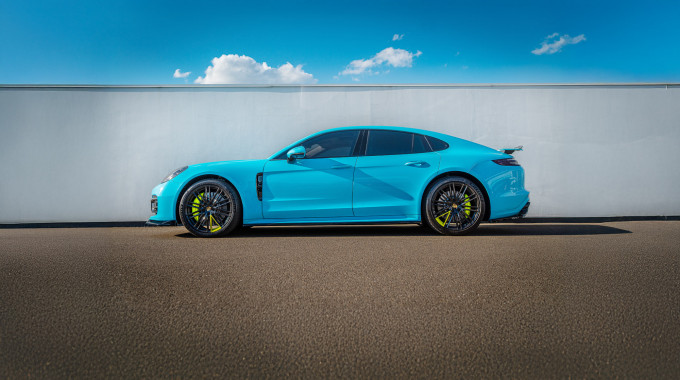
Plug-in Hybrid Vehicles (PHEV): What Are They & How Do They Work?
There’s a lot of interest in electric vehicles (EVs), but they have limitations and won’t work for everyone. However, for some people, a plug-in hybrid vehicle (PHEV) might be the right choice for optimum fuel efficiency but without worries about electric driving range.
PHEVs have far less electric-only range than a fully-electric vehicle, which leads some to think, “Why bother?” But the daily commute for many is close to or even within a PHEV’s all-electric range, and if they top up the battery regularly, they could end up driving almost exclusively on electricity.
But if there’s a need to go beyond that range – by a couple of kilometres, or straight across the country – they can do it without having to charge up at all if it isn’t convenient.
First, battery-electric vehicle (BEV) and hybrid vehicle differences
To better understand how a PHEV works, here's some background on the various types of electrified vehicles.
What is a battery-electric vehicle (BEV)?

Anatomy of a BEV | Photo: Nissan
A battery-electric vehicle, or BEV, runs solely on electricity. Examples include Tesla, the Chevrolet Bolt, Porsche Taycan, and Nissan Leaf. You plug it in, charge it up, and drive it. The available range will depend on the vehicle, but if a BEV runs out of battery power, it has to be recharged before it can be driven again.
Hybrid vehicle: gasoline engine and electric motor
Hybrid vehicles, or HEV, have become very popular since the Honda Insight and Toyota Prius were first introduced to Canada in 2000. The Prius is still around, and joined in the marketplace by hybrids from almost all automakers, including luxury and performance models.
Hybrids contain both a gasoline engine and electric motor, and a battery for the motor. Depending on power requirements, a hybrid switches between gasoline, electricity, or a combination of both. It does this continuously during driving and it’s all automatic, without the driver having to do anything.
Hybrid car battery is recharged by regenerative braking
A hybrid doesn’t get plugged in. Instead, the battery is recharged by regenerative braking. This system captures energy during deceleration, which would normally be wasted as heat, and is able to store it and convert it to electricity.
If it isn’t enough, the gasoline engine can also be used to help charge the battery. Fully electric vehicles also use regenerative braking, but it’s not enough to completely charge their larger batteries, and so they must be plugged in.
What exactly is a PHEV and how does it work?
Electric power followed by hybrid operation
A PHEV combines the best of both. After it’s been plugged in and charged, it has a range of fuel-free, electric-only operation. Of the PHEVs currently available, their electric-only range spans from 24 to 68 km. Once that depletes, the vehicle reverts to hybrid operation, running on its engine and battery. Even if you can’t plug it in, the vehicle will continue to run as long as it’s got enough gasoline.
Read our article on the 10 cheapest PHEVs in Canada.
Some PHEVs always start out electric-only, and run on that until it’s depleted. But more models now allow you to “save” the charge, so you can use it when it’s most advantageous. That could mean running on hybrid operation on the highway, and switching to electric-only in city traffic.
Here's a quick and informative video from U.S. Environmental Protection Agency on how PHEVs and blended PHEVs work (at the 1:15 video mark):
Charging a plug-in hybrid
All electrified vehicles can be charged on regular 120-volt household current, but that could take a day or more for a fully-electric car. If possible, most owners install a 240-volt charger at home, or use one available in their condo or at work, which significantly reduces the charging time. EVs can also be fast-charged on a DC (direct current) charger, but because of their enormous power requirements and installation cost, they’re at public stations only and not available for home use.
But while a PHEV can be charged on a 240-volt home charger, it’s viable to charge their smaller batteries from a 120-volt household outlet, eliminating the cost and trouble of installing a charger if you don’t want to go that route. If they’re plugged in whenever they’re parked, gradually topping up the battery, they’ll be ready to run on electricity alone for some or all of the next trip.
DC (direct current) charging not an option with most plug-in hybrids
With some exceptions, such as the Mitsubishi Outlander PHEV, most plug-in hybrids can’t be fast-charged on a DC charger. Eliminating the vehicle’s DC port reduces its complexity, and on a longer trip, most owners are more likely to rely on the hybrid operation rather than find a fast-charger.

AC vs DC charging | Photo: wallbox.com
There’s another type of plug-in vehicle, known as range-extended, but these are rare now. The best-known is the now-discontinued Chevrolet Volt. As with a PHEV, plugging in the car provides battery-only operation, and when that depletes, the car’s gasoline engine starts up. However, rather than hybrid operation, the gas engine doesn’t directly power the wheels but acts as a generator, making electricity to run the electric motor.
PHEVs cost more than hybrids, but less than fully-electric vehicles
Vehicle pricing depends on the brand and model, but generally when comparing a similar range of vehicles, a PHEV will cost more than a hybrid, but less than an electric-only. They’re not for everyone, but for many drivers, they’re an excellent option to consider.
Get pre-approved for your car loan today
If you are considering purchasing a new or used vehicle we strongly recommend getting pre-approved for your car loan first. You can skip the hassle of negotiation and avoid the stress of potentially getting denied for a loan in the finance office, allowing you to shop for a car with confidence!







